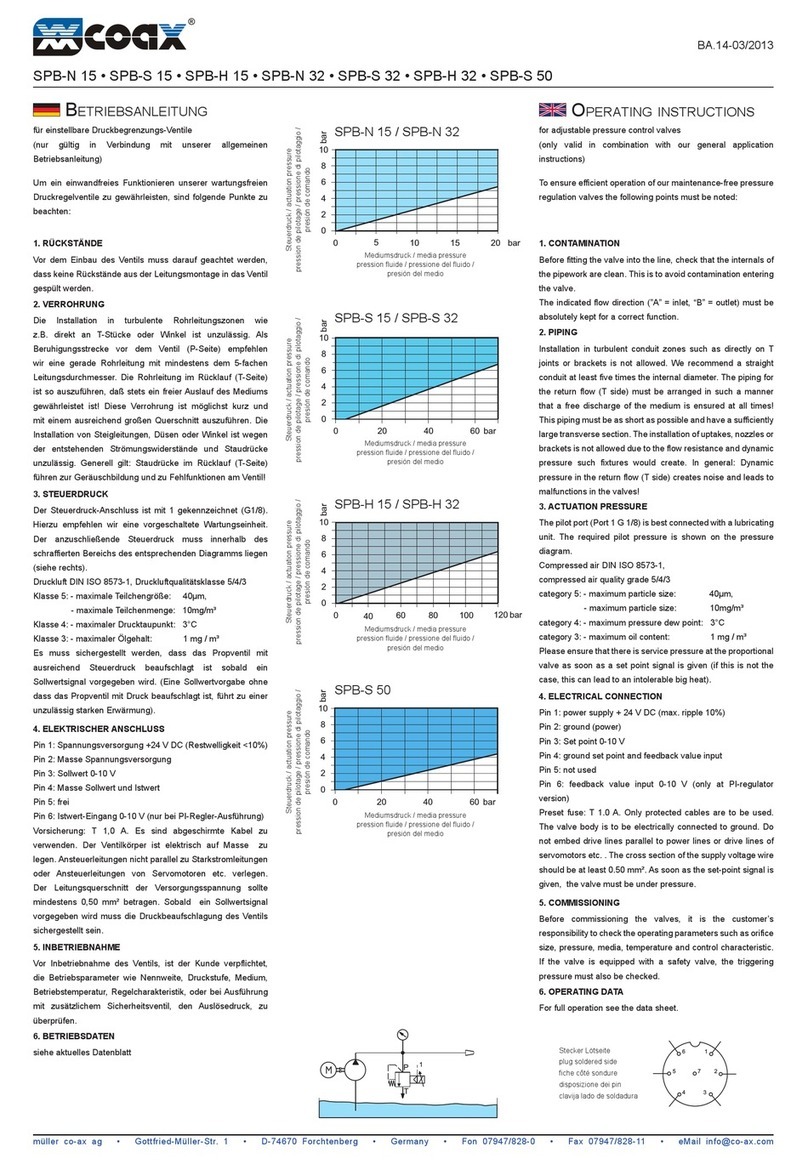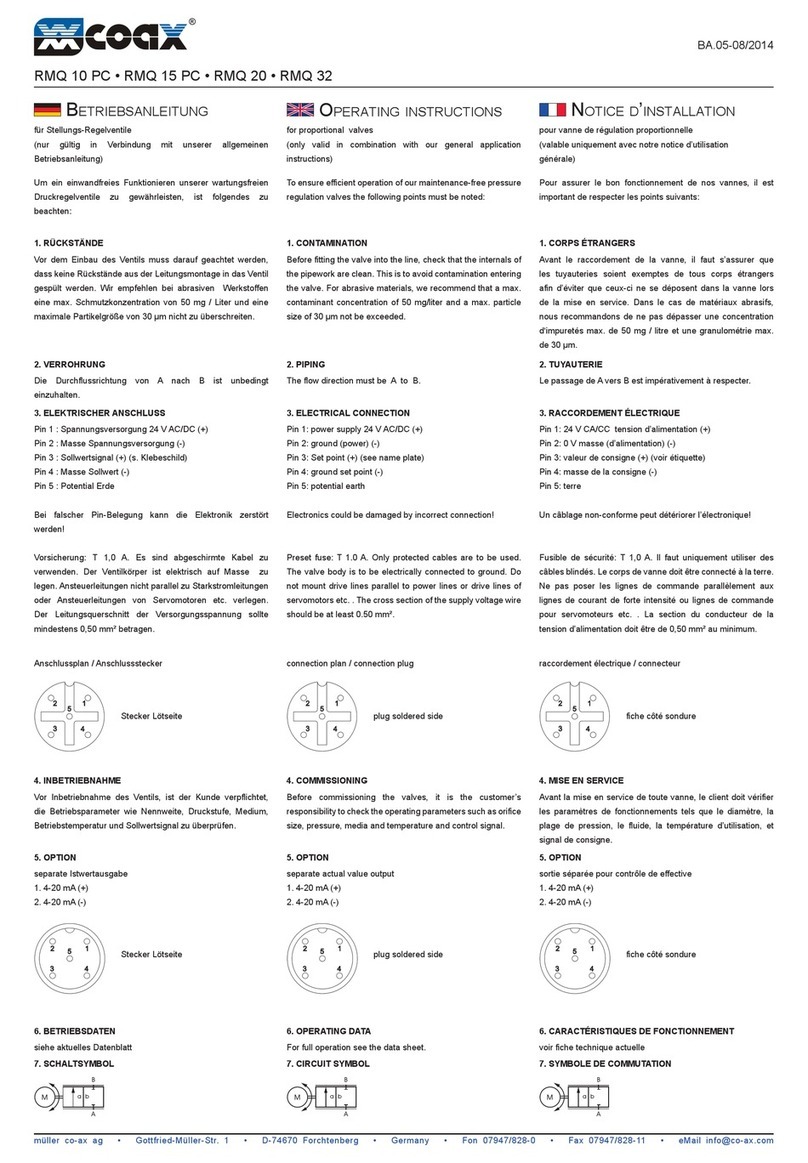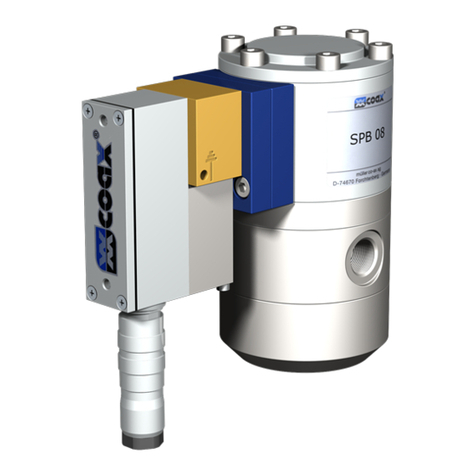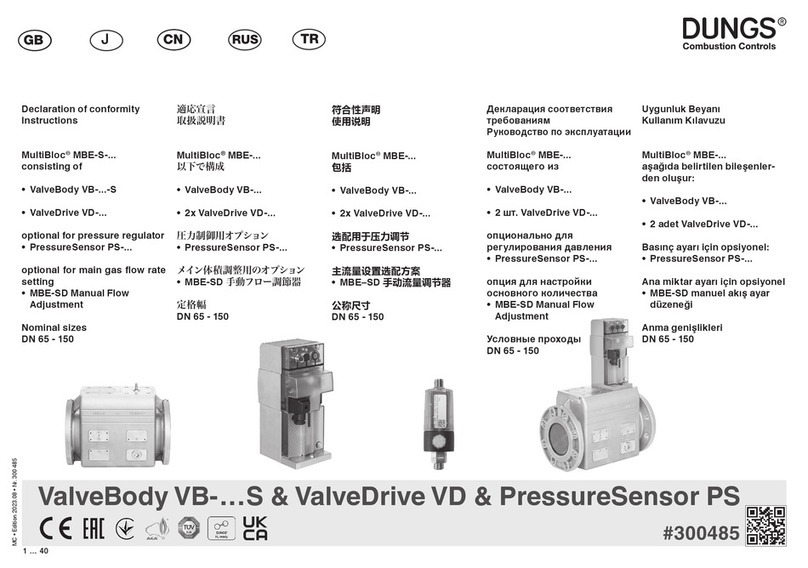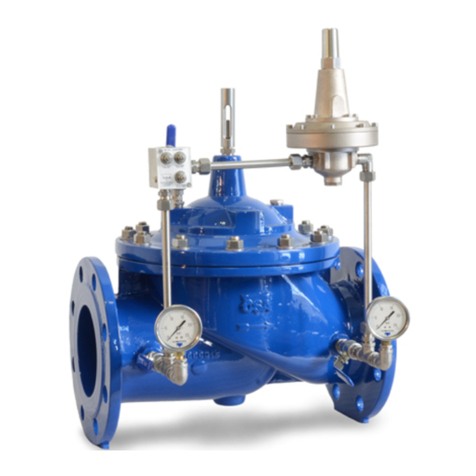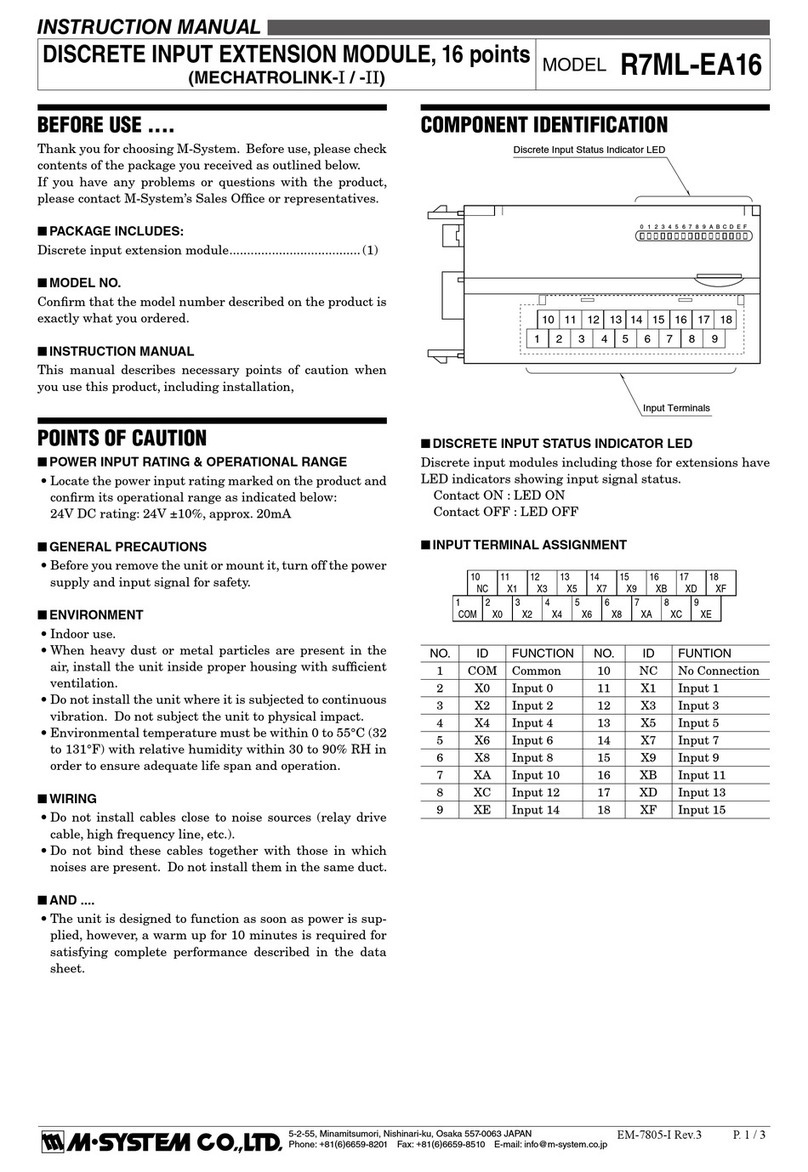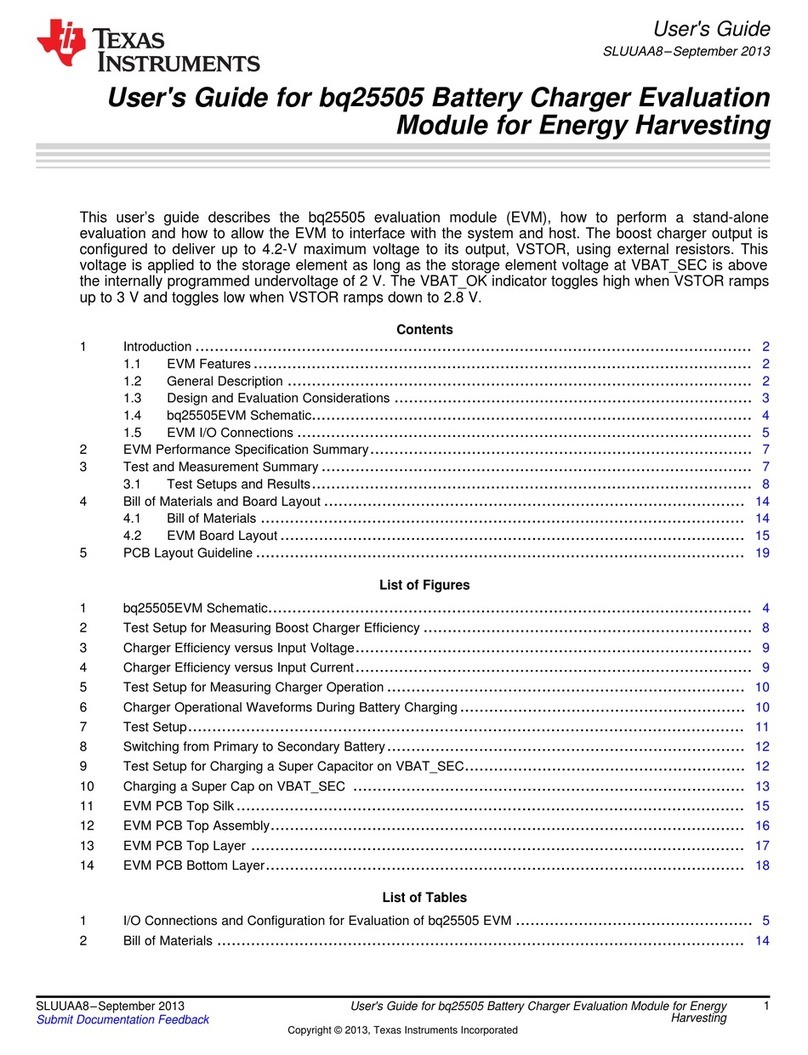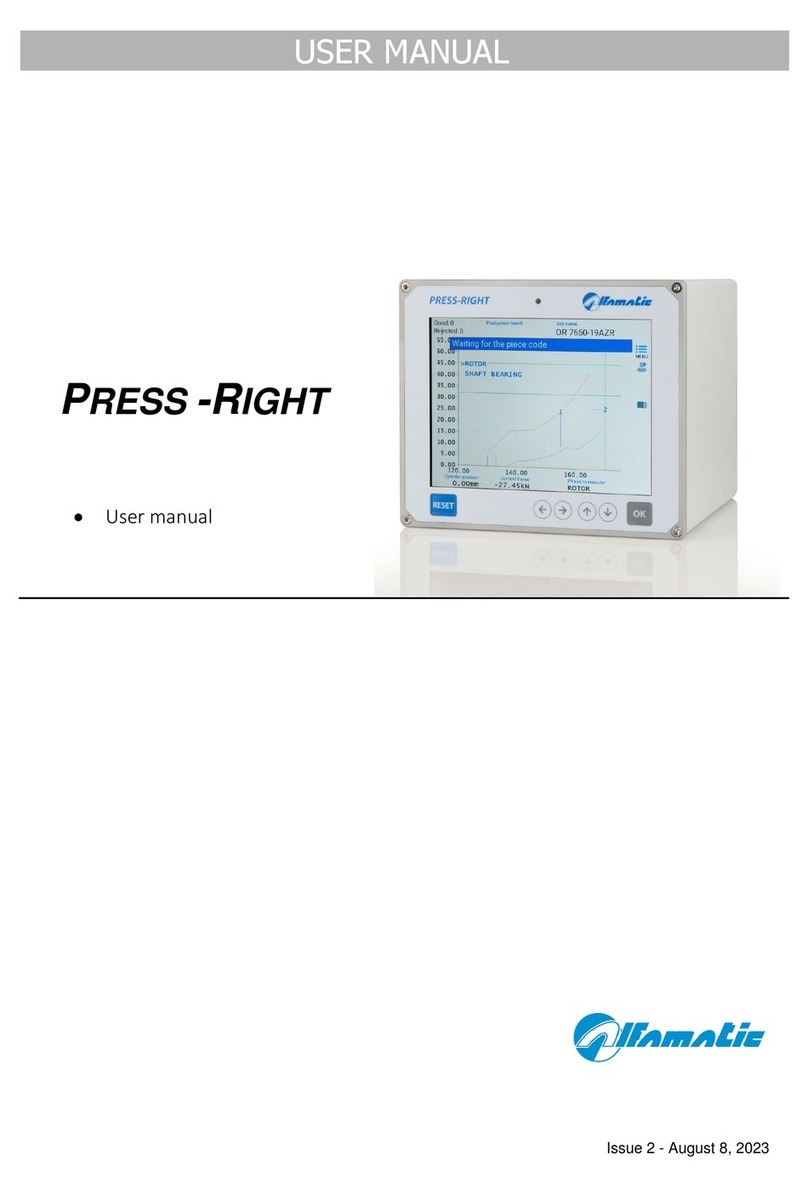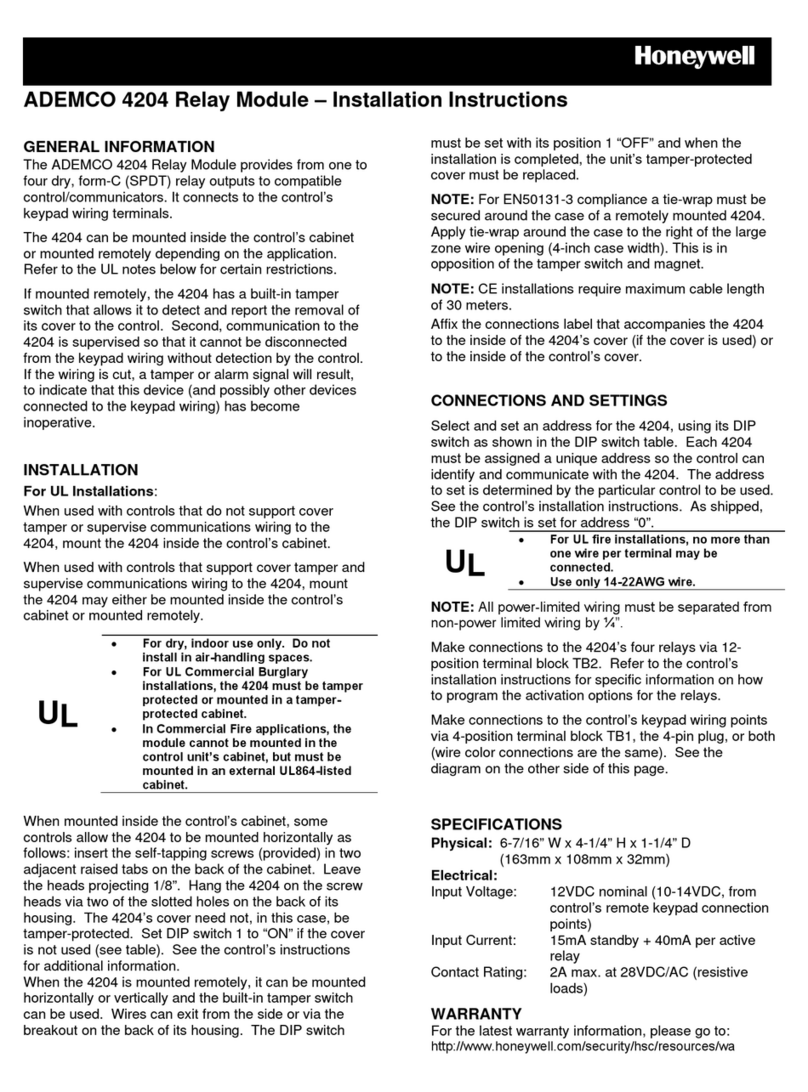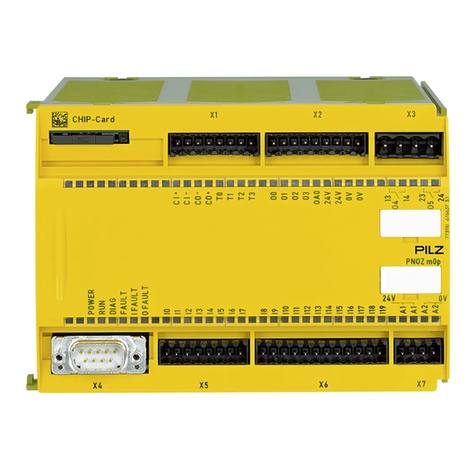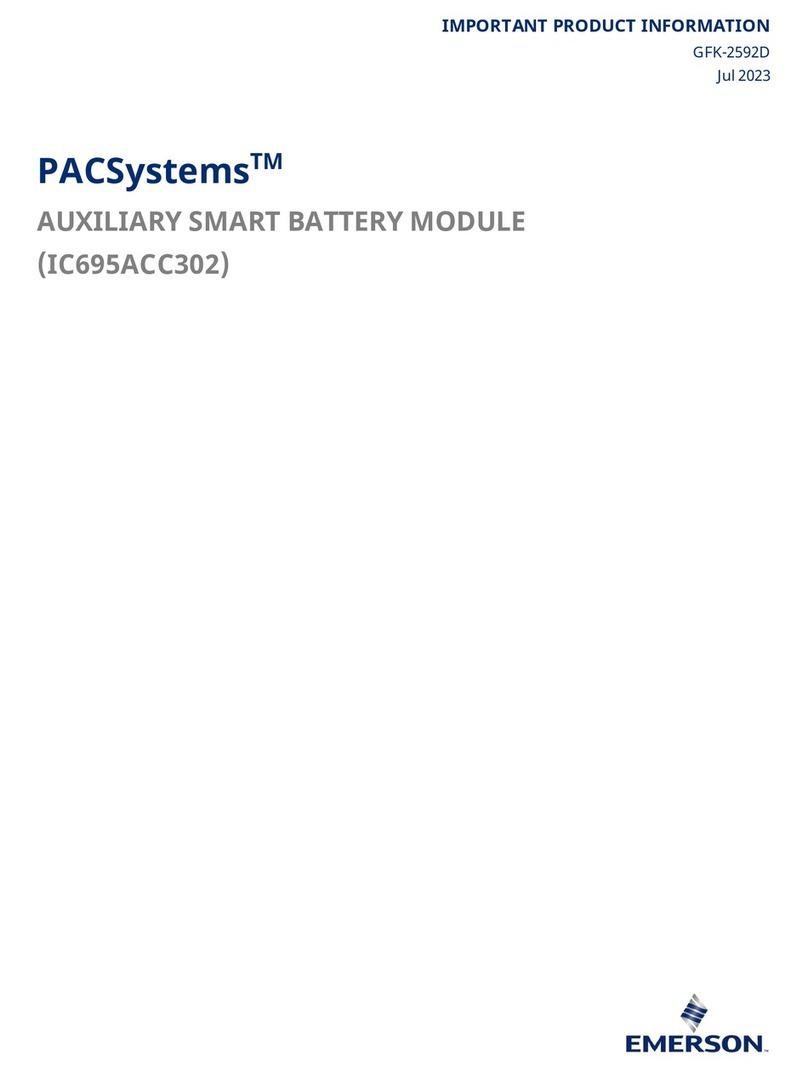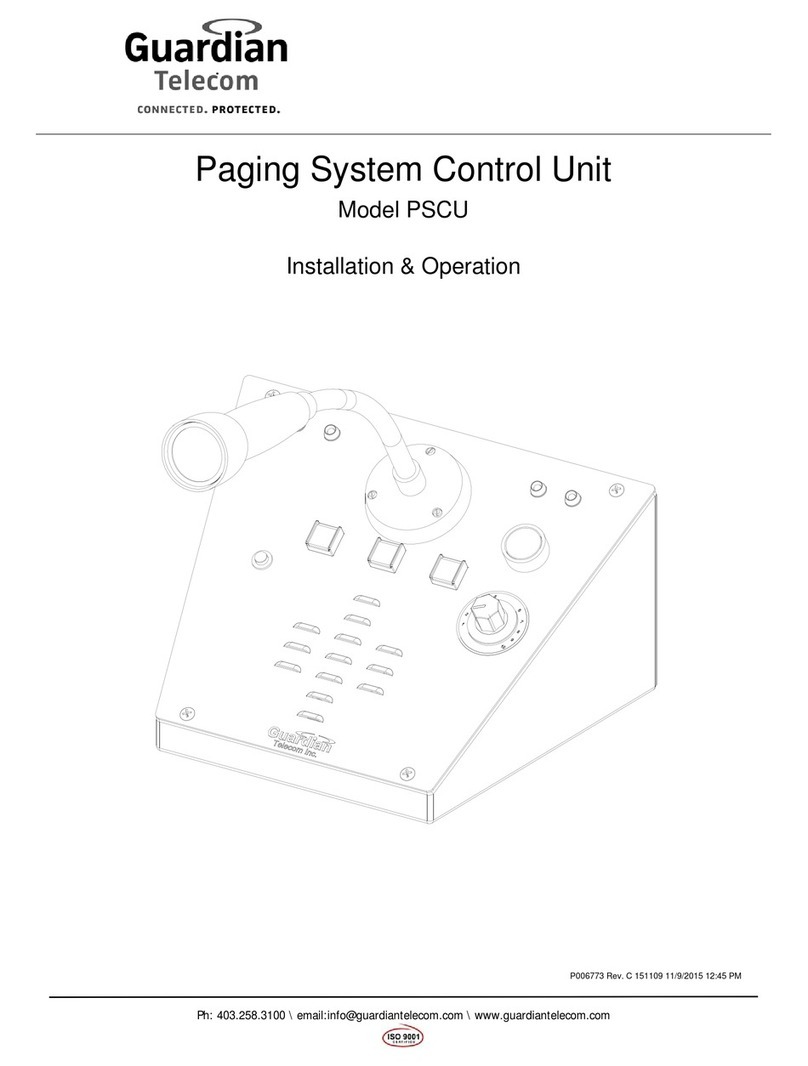Coax Quadax Series User manual

Operating Instructions
Quadax Series Butterfly Valves
(with actuator)
Version January 2011
müller co-ax ag
Gottfried-Müller-Str. 1
74670 Forchtenberg
Germany
Tel. +49 7947 828-0
Fax +49 7947 828-11
E-Mail [email protected]
Internet www.co-ax.com

Operating Instructions Quadax Series Butterfly Valves with Actuator
Version January 2011
Page 2/11
Table of contents
0 Introduction 3
1 Intended use 3
2 Safety instructions 3
2.1 General safety instructions 3
2.2 Safety instructions for the operator 3
2.3 Particular hazards 4
2.4 Labeling of the butterfly valve 5
3 Transport and storage 5
4 Installation in the pipeline 6
4.1 General 6
4.2 Working steps 6
5 Pressure test and commissioning 8
6 Normal operation and maintenance 9
7 Troubleshooting 9
8 Warnings 10
9 Further information 11

Operating Instructions Quadax Series Butterfly Valves with Actuator
Version January 2011
Page 3/11
0 Introduction
These operating instructions are designed to offer the user of butterfly valves from the
QUADAX series support in terms of installation, operation and maintenance and warn of any
hazards in particular.
Attention
Non-adherence to the following caution and warning notices may lead to
hazards, which in turn may cause the warranty to become invalid.
Please contact the manufacturer for any questions. For addresses please refer to
section 9.
1 Intended use
Butterfly valves from the QUADAX series are only to be used - following the installation of a
pipeline system (between flanges or by welding) and following the connection of the actuator
to the controls - to close off or pass on media or to regulate flow within the permitted
pressure and temperature limits. These butterfly valves are not recommended for media with
more than just a low amount of solid particulates, they are especially not recommended for
wear-causing solid media.
The maximum pressure (Ps), that may not be exceeded, is specified on the type plate, as is
the temperature range (Ts) that may not be exceeded. The precise relation between
pressure and temperature can be requested from the manufacturer.
When using the valve please ensure that section 2.2 < Safety instructions for the operator> is
observed.
Attention
If there is a pressure difference larger than 0.4 bar (liquid agents at ca. 20°C) for
valves used for uninterrupted operation for controlling, please discuss the respective
application limits with the manufacture. Cavitations must be avoided.
2 Safety instructions
2.1 General safety instructions
The same safety instructions apply to valves as to the remaining piping system in which it is
installed, as well as the control system to which the actuator is connected. These instructions
only offer safety instructions that should be observed additionally for valves.
For actuator assemblies please refer to the additional safety instructions in the instructions of
the assembly manufacturer.
2.2 Safety instructions for the operator
It is not the responsibility of the manufacturer CO-AX and, it should therefore be ensured
prior to use of the valve that:
the valve is only used as intended, as described in section 1.
Danger -
Life
threatening
No valve may be operated, whose permissible pressure/temperature range (=
"rating") is insufficient for operating conditions: The permissible range can be
requested from the manufacturer. For materials, pressures or temperatures that have
not been approved by the manufacturer during the offer phase, permissible pressures
above room temperature must be released by the manufacture.
Non-observance of these instructions can endanger life and limb and may
cause damage to the pipe system.

Operating Instructions Quadax Series Butterfly Valves with Actuator
Version January 2011
Page 4/11
Caution
It must be ensured that the selected materials for the parts of the valve that come into
contact with media must be suitable for the media used. The manufacturer assumes
no liability for damages that have been caused by corrosion or aggressive media.
Non-observance of these instructions can endanger life and limb and may
cause damage to the pipe system.
An actuating unit which was subsequently mounted on the valve, which was adjusted
to the valve and in both end positions correctly adjusted. In the closed position, the
end stop must be in the seat of the valve. A stroke limitation in the actuating unit for
the closed position should either be reset or made ineffective.
The pipe system and the control system were professionally mounted. The wall
thickness of the valve body is dimensioned so that in such professionally routed
pipelines an axial pipe force Fzas per Barlow's formula (Fz= π/4٠DN²٠PS) is
considered. With butterfly valves for clamping even higher values for Fzcan be
permitted. Any shear forces applies to the valve may not exceed 10% of the
aforementioned forces.
(PS = maximum permissible rated pressure at room temperature),
The valve is professionally connected to these systems, especially such valves which
are connected to the pipeline by welding,
The operating time of a pneumatic/hydraulic actuator is adjusted to the system
parameters,
In this pipe system the usual flow rates (e.g. 4 m/s for liquids) in continuous operation
are not exceeded and abnormal operating conditions such as vibrations, water
hammers, temperature shocks, cavitations, wet steam with a high water content and
more than insignificant portions of solids in the medium - particularly abrasive ones -
are cleared with the manufacturer,
Valves which are operated at operating temperatures of >50°C or <-20°C are
protected against contact together with the pipe connections,
The valves are only operated and maintained by specialized and trained personnel.
2.3 Particular hazards
Danger -
Life
threatening
The valve shaft is sealed by a stuffing box. Before the nuts on the stuffing box gland
are loosened or unscrewed, the pressure in the pipeline has to be completely
reduced and the pipe system empty, so that no medium escapes from the stuffing
box.
Danger -
Life
threatening
Before loosening the plug (or the cover) on the body or before removing the valve
from the pipeline the pressure in the pipeline has to be completely reduced so
that no medium can escape from the line uncontrollably. It must be ensured that the
valve is opened 5°-10, so that any pressure can escape from both sides of the
valve. The actuator may – if required – be disassembled only once the valve has
been opened for for this purpose and that it remains in this opened position.
Caution
For valves used as terminal valves:
With normal operation, especially with gaseous, hot and/or hazardous media a
dummy flange or a sealing cover has to be mounted on the free connecting
socket or (only for short-term use!) the valve has to be securely locked in “CLOSED”
position.
Caution when closing such as valve: Danger of crushing!
Caution
If a valve has to be opened in a pressurized line as a terminal valve, this must be
accomplished with utmost caution so that spurting medium does not cause any
damage.
Caution when closing such as valve: Danger of crushing!

Operating Instructions Quadax Series Butterfly Valves with Actuator
Version January 2011
Page 5/11
Caution
If a valve has to be removed from a pipeline:
Medium may escape from the line or the valve. In the case of media which are
harmful to health or hazardous the pipeline has to be completely empty before the
valve is removed. Please be careful with residues which continue to flow from
dead spaces of the valve or line or which remain in the valve (under pressure).
Depending on the length of the valve, the disc of the opened valve extends into the
bordering pipeline. As a security measure, the QUADAX valve with actuator should be
removed from the pipeline in the closed position. A disc which is not held by the
actuator may unintentionally open and thus lead to damages or injuries.
2.4 Labeling of the butterfly valve
Each butterfly valve is labeled with the following data (type plate):
Marking Comment
Manufacturer www.co-ax.com Address see section 9 <Information>
Type code e.g.:EQK102004XXXXXXXXX
XXX XXC XXXXX Code no.: valve identification
Serial number e.g.: 251896.1-AA Corresponds to: Order no. and production no.
KNA-Nr. e.g.: 800005 Kundenneutrale Artikelnummer
Type / PN QUADAX DNXXX (X“) Numerical value in mm, e.g. DN200 or in inches, e.g. 8"
PN / class Numerical value for PN /
class
PN / class = Dimension standard for flanged butterfly
valve
CWP / PS Numerical value in bar or
PSI
= Pressure, upper limit of usage at 20°C
max. T / TS Numerical value in °C or °F = Temperature, upper limit of usage
Year of
manufacture
e.g.: 43/09 = Delivery week/year of manufacture
0036 number of the specified body in accordance with RL
97/23/EG
II 2 GD c T6 Ex-marking „none electrical part“
directional
arrow
Marking of the preferred flow direction
The materials used in the valve, as well as parts that come into contact with the media, as
well as pressure parts are uniquely coded in the type code. The manufacturing date can be
uniquely traced via the serial number. In order to be able to identify the valve, the type plate
may not be removed nor damaged.
3 Transport and storage
Valves have to be handled, transported and stored with care:
The valve is to be kept in its original packaging and/or with the protection caps on the
flange connections/weld ends. The valve should be stored and transported (also to
the installation site) on a pallet (or supported in a similar way).
If stored prior to installation, valve and actuator are to be stored in a closed room and
to be protected against harmful influences such as dirt or moisture.
Especially the actuator and the flange connection faces/weld ends must not be
damaged by mechanical or any other influences.
Valves must be stored in the same way they were delivered. The actuator may not be
activated.
Caution
Values delivered without an actuator:
The valve must be transported carefully: The unsecured valve disc may open from
closing position due to external effects (e.g shaking).

Operating Instructions Quadax Series Butterfly Valves with Actuator
Version January 2011
Page 6/11
Attention
Valves with actuator type “safety position OPEN”
The valve disc of short valves protrudes from the housing on both sides. The
transport of such valves is only permitted with disassembled actuator and
closed valve disc!
4 Installation in the pipeline
4.1 General
The same instructions apply to the installation of valves in a pipeline as for the connection of
pipes and similar piping elements. The following instructions additionally apply to valves.
For the transport to the installation site please also observe section 3 (above).
Attention
Butterfly valves – especially those with short face-to-face dimensions – must be
transported and installed with a closed valve disc. Otherwise the discs might be
damaged. Leak tightness may no longer be ensured.
Attention
Danger of crushing for non-installed butterfly valves:
The actuator may only be closed and activated once the butterfly valve has been
installed in the pipeline.
If the valve is intended to be used as an end flap, either the closing lid has to be
mounted at the outlet or the actuator must be securely shielded against
unauthorized operation, in order to prevent any risk of crushing.
Note
The butterfly valve must be adjusted by the manufacturer for a sealed closed position:
In the closed position, the end stop of the valve/actuator unit must be in the base of
the butterfly valve. A stroke limitation in the actuator should either be reset or made
ineffective.
The "CLOSED" position of the end stop may not be changed.
Danger -
Life
threatening
If – in an exceptional case – a valve has to be mounted without actuator:
It must be ensured that such a valve is not pressurized.
If an actuating unit is retrofitted, torque, direction of rotation, actuating angle and the
setting of the end stops “OPEN” and “CLOSED” of the valve have to be adjusted to
the operating conditions. It must be ensured that the valve is sealed in a clockwise
direction!
Non-observance of these instructions can endanger life and limb and may
cause damage to the pipe system.
Attention
Valves with electric actuator:
It must be ensured that the valve is shut off in the "Closed" position by the signal
of the torque switch. In the "Open" position, the valve must be shut off with the
signal of the limit switch .
For further information, please refer to the operating instructions for the electric actuator.
4.2 Working steps
Transport valve in the protective packaging to the installation site and unpack it only
there.
Inspect valve and actuator for any damages that may have occurred during transport.
Damaged valves or actuators may not be installed.
Ensure that only valves are installed with the pressure class, the connection type and
connection dimensions which meet the application requirements. Observe the type
plate on the valve. The connection data for the actuator has to correspond to the data
of the controls. Observe type plate on actuator.
Danger -
Life
threatening
No valve may be installed, whose permissible pressure/temperature range (= "rating")
is insufficient for operating conditions: This permitted range is described in the CO-AX
brochure <QUADAX butterfly valves> - see section 9 <Information>. For materials,
pressures or temperatures that have not been specified in the above brochure,
permissible pressures above room temperature must be released by the manufacture.

Operating Instructions Quadax Series Butterfly Valves with Actuator
Version January 2011
Page 7/11
Non-observance of these instructions can endanger life and limb and may
cause damage to the pipe system.
If in doubt, please contact the manufacturer.
Butterfly valve with short face-to-face dimension:
Counter flanges and/or pipe ends have to have a clear span allowing for sufficient
space for the opened valve disc, so that the latter is not damaged when being
swiveled out.
Prior to installation the valve and the downstream pipeline have to be thoroughly
cleaned of any contamination, especially of hard foreign substances.
Danger -Life
threatening
Butterfly valves with a short face-to-face dimension and actuator safety position OPEN":
For installation
- the opened valve disc has to be closed with control medium,
- then the valve has to be kept in the "CLOSED" position while fully pressurized,
until it is inserted in the line and securely screwed on,
- finally slowly reduce the control pressure.
Non-observance of these instructions can endanger life and limb and may
cause damage to the pipe system.
Butterfly valves of the series QUADAX can generally be installed irrespective of the flow
direction. To benefit from the optimum function of the butterfly valves:
it is recommended to install the valve so that an arrow direction marked on the type
plate corresponds to the direction that the pressure exerts on the closed disc. This
direction may well be opposite to the flow direction with opened butterfly valve!
The preferred installation position is the one with horizontal valve shaft. If this is not
possible, the shaft should be installed as much as possible from vertical position. If
possible, the actuator should not be mounted directly below the valve. Stuffing box
leakage could damage the actuator. If possible, the actuator should not be mounted
directly above the valve: Air heated by the pipeline may damage the actuator.
Caution
A subsequently mounted actuator must be supported if, as a result of its weight
and/or the mounting position on the mounting kit, a non-scheduled bending load
occurs between the valve and the actuator.
When inserting the valve (and the flange seals) in an already mounted pipeline the
distance between the pipeline ends has to be dimensioned in such a way that all
connecting surfaces (and seals) remain undamaged.
The gap, however, must not be larger than necessary so that no additional stress is
generated in the pipeline during installation.
Only butterfly valve with flanges:
The counter flanges of the pipeline have to be flush, level and parallel.
Attention
Butterfly valves with flange ends:
The sealing surfaces on bodies with flange ends of the butterfly valve are designed in
such a way that flange seals according to EN1514-1 or ANSI B16.21 are to be
implemented. Counterflanges must have smooth sealing strips, e.g. shape C, D or E
in line with EN 1092 or stock finish as per Ansi B16.5. Other flange shapes are to be
agreed with the manufacturer CO-AX.
Attention
Butterfly valves with a short face-to-face dimension must be inserted in the gap
between the pipeline ends with a closed valve disc; otherwise the valve disc may be
damaged and the valve no longer seals.

Operating Instructions Quadax Series Butterfly Valves with Actuator
Version January 2011
Page 8/11
Flanged butterfly valves are to be centered on the counterflange during installation by
means of the flange screws before the screws are tightened.
Attention
Butterfly valves with a short face-to-face dimension partly require screws of a varying
length for the connection to the counterflanges. For the measurements for the flange
screws please refer to CO-AX planning documentation
Only butterfly valve with weld ends:
The weld ends of the valve have to be flush, level and parallel and of the same
material as the pipes - see type plate of the valve. Opposite weld ends have to fit to
one another in terms of diameter and shape.
Welding cables must not be connected to the valve but to the pipeline.
By professional welding it has to be ensured that neither considerable tensions are
generated in the pipe section or transferred to the valve nor that the butterfly valve is
damaged by heat effect; only temperatures of <300°C measured on the body wall
next to the bearing socket, are permissible.
Attention
When welding the valve into the pipeline, the welding process has to be controlled so
that the supplied thermal energy is limited and a distortion of the valve body is
avoided. For example, the weld end should be "crossed" in order to prevent tension
to the valve housing.
Non-compliance with these constructions may lead to a distortion of the valve
housing. A lasting distortion of 1/10 mm in the seat area (around the bearing
sockets) can render the valve useless.
All butterfly valves:
To the connection of the actuator to the control the manual of the actuator
manufacturer applies.
At the end of the installation an operational check with the signals of the control is to
be performed: the valve has to close and open properly in line with the control
commands. The signals of the position feedback (if in place) must correctly show the
position of the valve.
Discernible malfunctions must be remedied prior to commissioning. See also section
7, <Troubleshooting>.
Caution
Incorrectly executed control commands may lead to a risk to life and limbs of
operating staff and cause damage to the pipe system.
5 Pressure test and commissioning
The pressure test of the valves has already been performed by the manufacturer. For the
pressure test of the pipe section with installed valves, the following should be taken into
consideration:
First thoroughly flush newly installed line systems in order to flood out all foreign substances.
Valve opened: The testing pressure may not exceed the value 1.5 x PS (according to type
plate). (PS = maximum permissible rated pressure at 20°C).
Valve closed: The testing pressure may not exceed the value 1.1 x PS (according to type
plate).
If any leakage occurs from a valve, please refer to section 7 <Troubleshooting>.

Operating Instructions Quadax Series Butterfly Valves with Actuator
Version January 2011
Page 9/11
6 Normal operation and maintenance
The valves are to be operated with the signals of the control. Valves which were delivered ex
works with the actuator are adjusted for correct operation and should not be re-adjusted as
long as the valve is in perfect working order.
For the manual emergency actuation on the actuator (if available) normal manual forces are
sufficient; the use of extensions to increase the actuation torque is not permitted.
Regular maintenance work on the valves is not required; however, when the line section is
inspected no leakage may escape to the outside on any valve. In such cases, please refer to
section 7 < Troubleshooting>.
It is recommended to actuate valves remaining in one position once or twice a year.
The prospective switching cycles of the valve are being calculated with the following formula:
( 4,000,000 / DN(mm) ). If the actual amount of switching cycles exceeds the calculated
number, please review with the manufacturer.
Caution
A butterfly valve is normally not self-locking:
The actuator may not be removed as long as the butterfly valve is pressurized.
Note
A piston actuator is not self-locking:
Piston actuators without spring reset require a permanent supply of control
pressure for all positions which are triggered under control pressure.
7 Troubleshooting
When remedying faults, it is imperative that section 2 <Security notes> is observed.
Type of
malfunction Measure Note
If an actuator with
spring reset
has to be removed
Risk of injury
Before the actuator is removed from the valve,
depressurize the pipeline and uncouple the actuator
from the control pressure supply. Note 1:
Spare parts must be
ordered based on all
data contained on the
type plate. Only
original CO-AX spare
parts can be installed.
Note 2:
If after the removal it
is discovered that the
body and/ or the inner
parts are not
sufficiently resistant to
the medium, parts
made of a suitable
material are to be
selected.
Leakage on the
flange connection or
plug or
housing cover
Retighten flange screws.
If the leakage cannot be remedied in this manner:
repair required: replace seal. Observe section 2.3.
<Particular hazards> and request spare parts and
necessary manual from CO-AX.
Leakage in the seat
seal
Check whether the valve is 100% sealed.
If the valve is sealed:
Check whether the actuator closes with full torque.
If this is the case:
Open/ close valve repeatedly under pressure.
If the valve still leaks:
Increase torque in the "CLOSED" position to max.
1.1. x nominal torque.
If the valve continues to leak:
repair required: Replace seat seal. Observe section
2.3. <Particular hazards> and request spare parts
and necessary manual from CO-AX.

Operating Instructions Quadax Series Butterfly Valves with Actuator
Version January 2011
Page 10/11
Leakage on the
stuffing box
Retighten both nuts on the stuffing box gland
alternately and in small steps of quarter turns each
clockwise.
If the leakage cannot be remedied in this manner:
repair required: Request spare parts and necessary
instructions from CO-AX.
If the nuts on the stuffing box gland have to be loosened or
unscrewed (counterclockwise):
Danger! Life threatening!
In order to protect the operating personnel against
any danger, please ensure that the line has been
depressurized on both sides of the valve.
Please observe section 2.3 <Particular hazards>.
Malfunction
Check actuating unit and control commands.
If actuator and control are ok:
Remove and inspect valve (in observance of the
notes from section 2.3, <Particular hazards>).
If the valve is damaged:
Repair required: Request spare parts and necessary
instructions from CO-AX.
In the event of malfunctions to the actuator, please refer to the manufacturer's operating
manual.
8 Warnings
Source of danger Measure
Generation of a flammable atmosphere Operating instructions: Please watch out for leakages, as a flammable
atmosphere may otherwise develop
Sparks during commissioning /
assembly Operating instructions: Assembly / disassembly / service only allowed for
a non-flammable atmosphere
Loading single components Please make sure that the QUADAX valve is earthed. Any existing
attachment parts should be dealt with in line with manufacturer
instructions.
Application Any heat buildup of valve parts as a result of hot media must be below
ignition temperature
Sound energy can be caused by attachment parts or flow noise
Closing times below the rule of thumb are not allowed (Closing time in s =
nominal width in mm / 100) not allowed
The specific manufacturer operating instructions must be referred to for
any existing attachment parts
Generation of ignition sources
When installing additional parts which have not been installed by the
manufacturer or have been explicitly approved for installation, such as
aluminum plates or other fittings, e.g. electric position feedback, a NEW
hazard analysis has to be performed.
Corrosion Corrosion exceeding 1.5mm may lead to a weakening of pressure parts
and impair the functionality of the valve or may even lead to breakdown.

Operating Instructions Quadax Series Butterfly Valves with Actuator
Version January 2011
Page 11/11
9 Further information
These operating instructions, the so-called CO-AX brochures and further information – also
in other languages – can be obtained here:
müller co-ax ag
Gottfried-Müller-Str. 1
74670 Forchtenberg
Germany
Tel. +49 7947 828-0
Fax +49 7947 828-11
www.co-ax.com
Table of contents
Other Coax Control Unit manuals
Popular Control Unit manuals by other brands
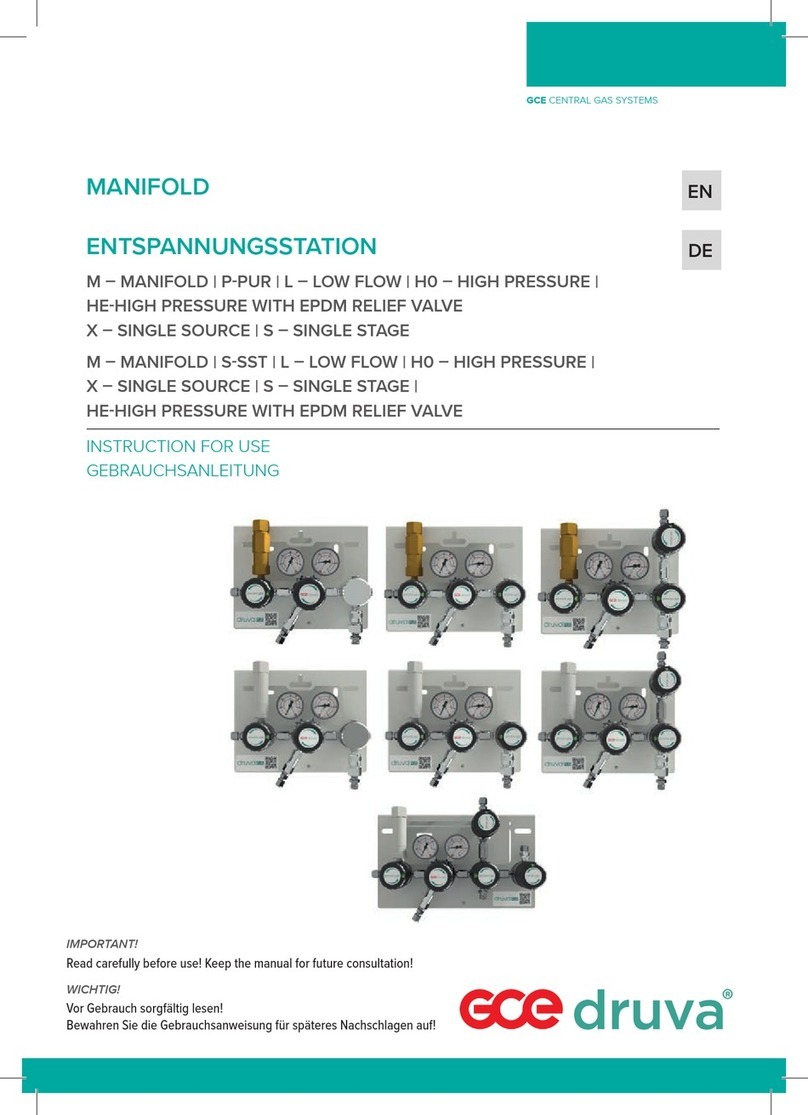
GCE druva
GCE druva MPLH0XS0 Instructions for use
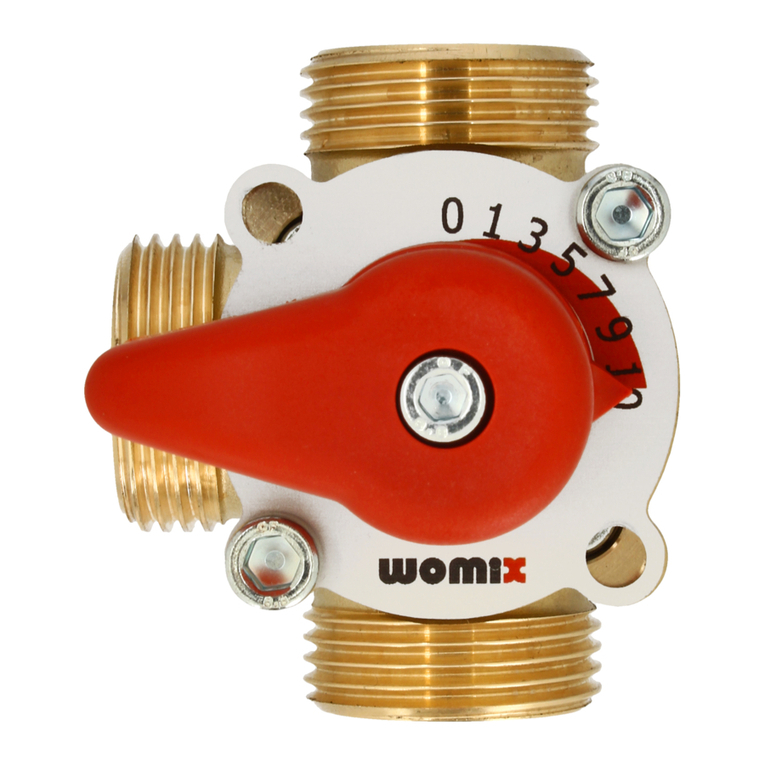
WOMIX
WOMIX MIX M 3-20 Mounting and operating instruction
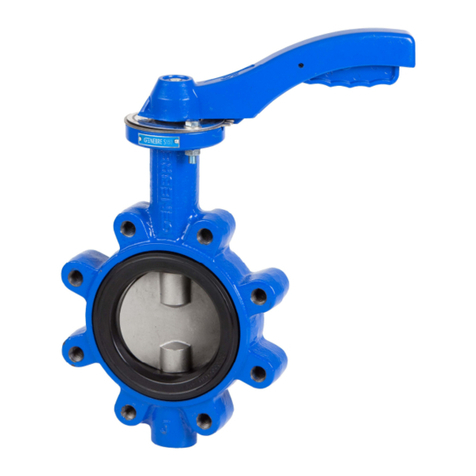
Genebre
Genebre 2108 Installation, operation and maintenance manual

Texas Instruments
Texas Instruments BOOSTXL-TPS652170 user guide
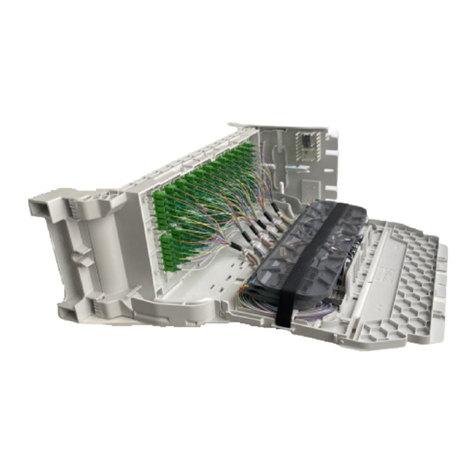
Nexans
Nexans XPLORER 144 - 3X48 Notice Instructions
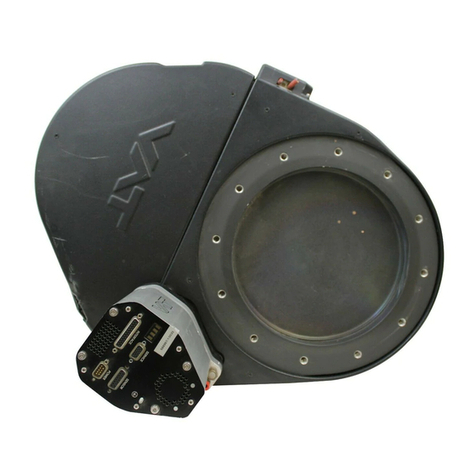
VAT
VAT 650 Series Installation, operating, & maintenance instructions
